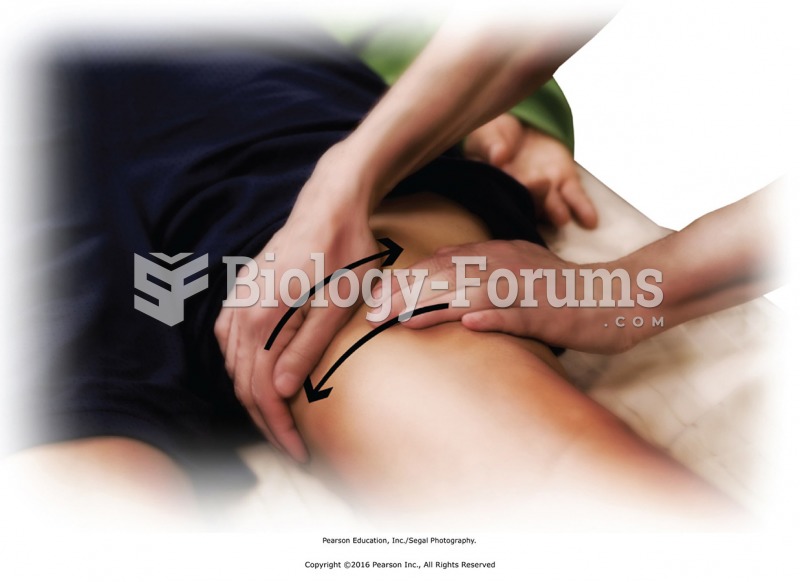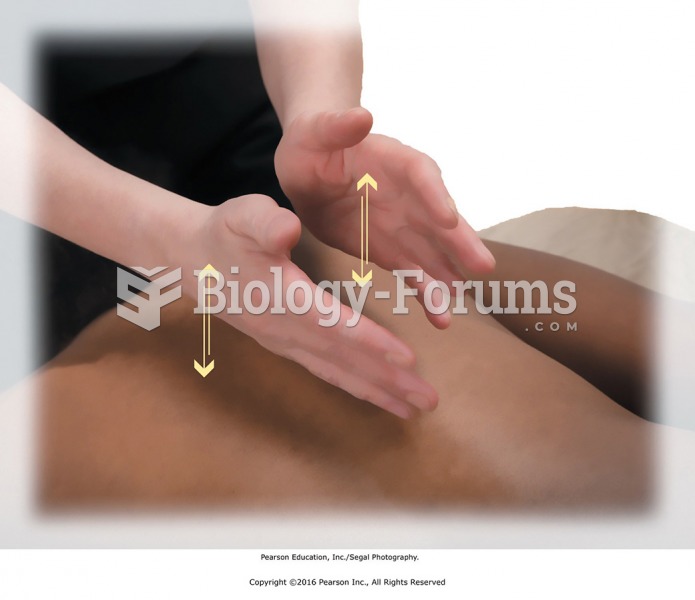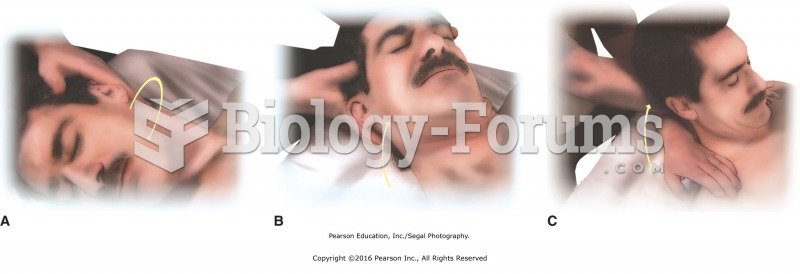|
|
|
Blood in the urine can be a sign of a kidney stone, glomerulonephritis, or other kidney problems.
The most common childhood diseases include croup, chickenpox, ear infections, flu, pneumonia, ringworm, respiratory syncytial virus, scabies, head lice, and asthma.
Many of the drugs used by neuroscientists are derived from toxic plants and venomous animals (such as snakes, spiders, snails, and puffer fish).
It is believed that humans initially contracted crabs from gorillas about 3 million years ago from either sleeping in gorilla nests or eating the apes.
Asthma attacks and symptoms usually get started by specific triggers (such as viruses, allergies, gases, and air particles). You should talk to your doctor about these triggers and find ways to avoid or get rid of them.
 Cradle the head briefly in both hands to end this section. Hold for a few seconds until you can feel ...
Cradle the head briefly in both hands to end this section. Hold for a few seconds until you can feel ...
 Perform horizontal stroking of the thigh by facing the table and placing hands on the thigh with ...
Perform horizontal stroking of the thigh by facing the table and placing hands on the thigh with ...





